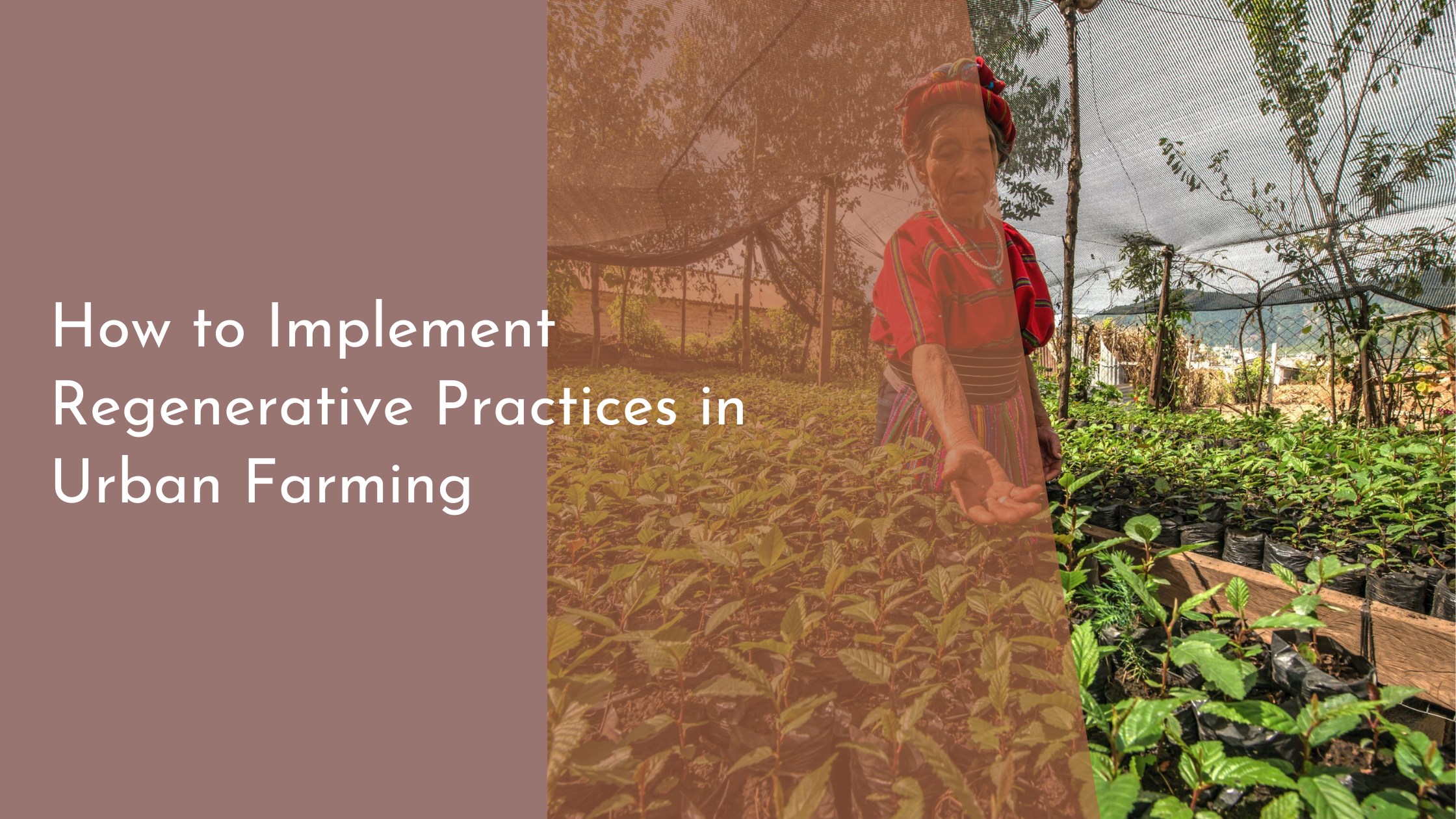How to Implement Regenerative Practices in Urban Farming
Urban farming has seen a renaissance in recent years, driven by the growing need for sustainable food production and the increasing interest in environmental stewardship. Regenerative practices in urban farming not only enhance soil health and biodiversity but also foster a sense of community and sustainability in densely populated areas. This article explores how to implement regenerative practices in urban farming to create vibrant, productive, and eco-friendly spaces in our cities.
Understanding Regenerative Urban Farming
Regenerative urban farming is a holistic approach that goes beyond traditional gardening by focusing on restoring and enhancing the ecosystem’s health. Unlike conventional methods, which may deplete the soil, regenerative practices work to improve soil fertility, increase biodiversity, and enhance the water cycle. This is achieved through techniques like crop rotation, cover cropping, and avoiding the use of synthetic chemicals. By focusing on the interconnectedness of natural systems, regenerative urban farming helps create a resilient and sustainable food source within urban environments.
A key component of regenerative urban farming is the emphasis on building healthy soil. Healthy soil is rich in organic matter and teeming with biodiversity, which supports robust plant growth and reduces the need for external inputs. Practices such as composting, mulching, and integrating perennials can help build and maintain healthy soil. By prioritizing soil health, urban farmers can enjoy more productive harvests and contribute to the overall ecological health of their communities.
Selecting Suitable Urban Farming Techniques
Choosing the right techniques is essential for successful regenerative urban farming. Vertical farming, for example, maximizes space efficiency, allowing farmers to grow crops in tightly packed urban settings. This method often uses hydroponics or aeroponics to minimize water consumption while maintaining high yields. Moreover, vertical farming can be easily integrated into existing structures, such as building walls or rooftops, making it an excellent choice for urban environments.
Community gardens are another popular technique for urban farming. They provide shared spaces for residents to grow food collectively while promoting social interaction and learning. Raised beds, container gardening, and edible landscaping are common practices within community gardens, allowing participants to grow a variety of crops even in limited spaces. By selecting suitable techniques, urban farmers can create diverse, productive ecosystems that align with regenerative principles.
Integrating Composting and Waste Management
Composting is a cornerstone of regenerative urban farming, allowing urban farmers to turn organic waste into nutrient-rich soil amendments. By composting kitchen scraps, yard waste, and other organic materials, farmers can reduce their reliance on chemical fertilizers and improve soil health naturally. Composting not only enriches the soil but also helps reduce the volume of waste sent to landfills, contributing to a more sustainable urban environment.
Incorporating waste management practices alongside composting can further enhance the sustainability of urban farming. Urban farmers can implement strategies such as vermicomposting, which uses worms to break down organic waste, or bokashi composting, an anaerobic fermentation process that efficiently processes food waste. By integrating these practices, urban farmers can create closed-loop systems that minimize waste and maximize resource efficiency.
Building Community Through Shared Initiatives
Regenerative urban farming offers an excellent opportunity to build community through shared initiatives. Community-supported agriculture (CSA) programs, for instance, allow local residents to invest in a farm’s operations, receiving a share of the produce in return. This model not only provides farmers with a reliable income but also fosters a sense of ownership and connection among community members, who benefit from fresh, locally grown food.
Educational workshops and volunteer opportunities are also effective ways to engage the community in regenerative urban farming. By hosting events that teach sustainable gardening techniques, composting, and food preservation, urban farms can empower residents with the knowledge and skills to participate in sustainable food systems. These initiatives not only strengthen community bonds but also nurture a culture of environmental stewardship within urban areas.
Implementing regenerative practices in urban farming not only transforms our cityscapes into green, productive spaces but also fosters community engagement and environmental responsibility. By understanding the principles of regenerative farming, selecting appropriate techniques, integrating effective waste management, and building community initiatives, urban farmers can create sustainable ecosystems that benefit both people and the planet. As more cities embrace these practices, the future of urban agriculture looks bright and promising.

